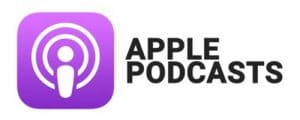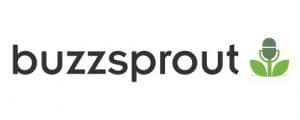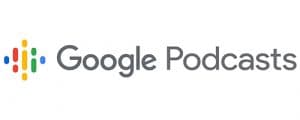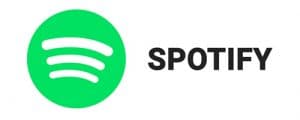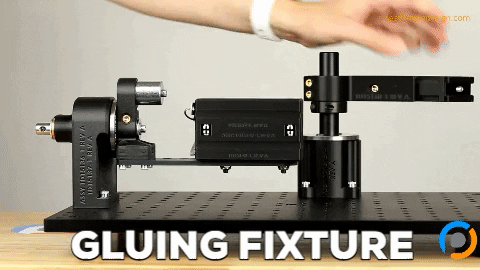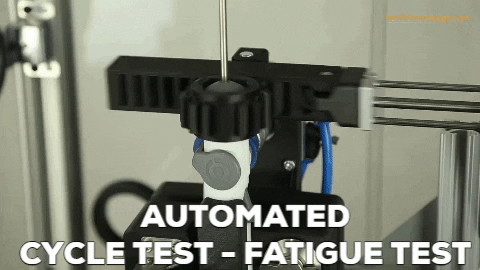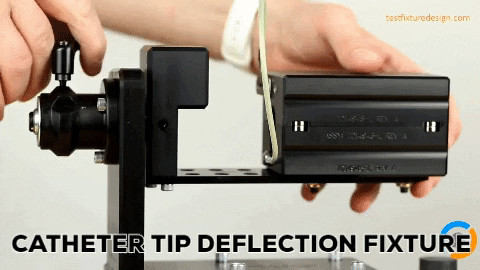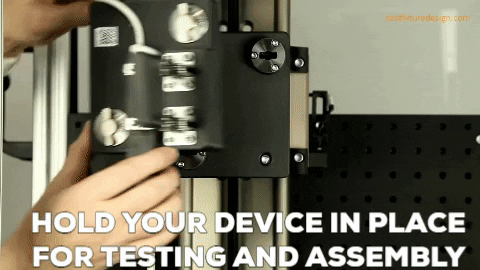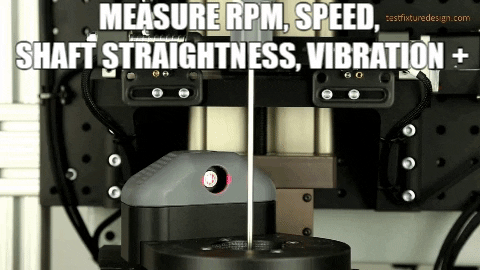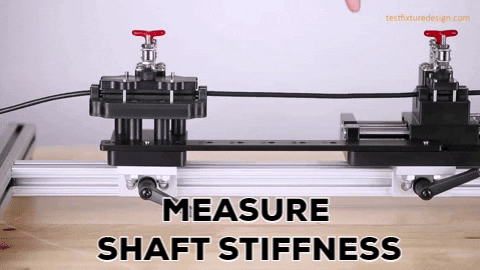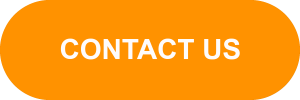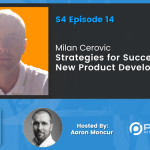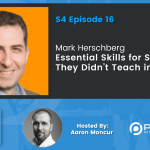Ian Peterman | Legacy Branding, Uncommon Materials, & the One Contact Rule
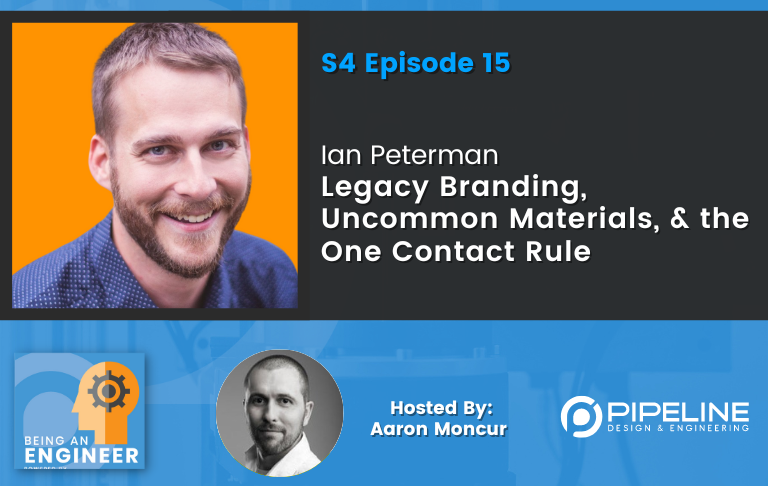
Who is Ian Peterman?
Ian Peterman grew up surrounded by design, engineering, and entrepreneurial people. He started his first business at the age of 12, and after working as a designer for over a decade within startups and companies like HP, he started the Peterman Design Firm to help visionaries develop products and businesses.
https://www.consciousdesignbook.com/
Aaron Moncur, host
EXPAND TO VIEW EPISODE TRANSCRIPTION
Aaron Moncur 00:00
Live today we are introducing a new program to the being an engineer podcast to recognize engineers who excel in their field, go to teen pipeline.us/excellence and fill out the form with the name of your nominee and a short description of what makes him or her deserving of the award. Winners will be announced and recognized on the show and will receive some complimentary being an engineer podcasts swag, the program is live right now go to Team pipeline.us/excellence and give an engineer the recognition he or she deserves.
Ian Peterman 00:36
I did everything I was the only designer that they had I did all the design all the engineering all the supply chain all everything. And it made way more sense and I feel like that’s an opportunity most people don’t have unless you work at a really small company
Aaron Moncur 01:07
Hello, and welcome to the being an engineer Podcast. Today we’re speaking with Ian Peterman in grew up surrounded by design, engineering and entrepreneurial people. He started his first business at the age of 12. And after working as a designer for over a decade within within startups and companies like HP, he started the Peterman design firm to help visionaries developed products and businesses. Ian, welcome to the show.
Ian Peterman 01:34
Thanks for having me.
Aaron Moncur 01:36
Yeah. All right. So what made you decide to begin a career in product design?
Ian Peterman 01:42
Well, I I was one of those kids that knew at a young age. So I always was drawing sketching. I wanted to invent things. I thought, you know, James Bond devices were the coolest things ever. And my dad happened to be a designer and he did a lot of contract work at home. So I got to see him actually doing design work, and decided want to try it. So I started to learn CAD a little bit and then worked for my dad when I was a kid as a subcontractor getting to practice and learn. And then from there, I got an internship when I was 16, working at doing telecommunications, lasers loved it, and never left.
Aaron Moncur 02:30
Cool. I love that you worked for your dad doing some kind of engineering or CAD related work growing up, what did you do for him?
Ian Peterman 02:38
I did a lot of CAD drafting. So I learned AutoCAD. And I did wiring schematics did like rack mounted units for medical and clean rooms and things like that. And kind of really on a super nitty gritty, technical drawing side.
Aaron Moncur 02:57
And how old were you then?
Ian Peterman 02:59
I started when I was 12. I learned I learned SolidWorks pretty well, by the time I was 13.
Aaron Moncur 03:08
Really? That’s so cool. I bet that was super helpful for for for your dad right to just hand some of the drafting work over to you.
Ian Peterman 03:15
Oh, yeah. Yeah, definitely. Definitely helped him. Definitely had to take some time to teach me to but I got I got better.
Aaron Moncur 03:23
Yeah, of course. Yeah. Like all of us. Alright, well, you talk about growing up surrounded by design, engineering, accounting and entrepreneurial people. We heard a little bit about your dad already. Certainly on the design and engineering side. I’d love to hear a little bit more about that environment that you grew up in. What else can you share?
03:43
Yeah, so my my grandfather, my dad’s dad was also a designer engineer. He like worked at Boeing 747. And then my mom was an accountant, still is just CPA, and my parents both they like to start just little businesses, nothing. I didn’t inherit a huge trust fund from from any of it. But I got to watch them start different businesses. And one actually is called inside technical education. And they created some drawing material for teaching kids how to draw. So he actually used what he used he that’s how he taught me and then created a book out of it. And so that one’s still alive. I’m actually running it. It’s just a little, a little self published company. But that was a lot of learning how that went and having out every business made it. That’s actually the only one still around. So learning learning how things fail, as well was definitely part of the home curriculum of seeing them start and not always win.
Aaron Moncur 04:56
I’m curious, was that traumatic for you at all as a kid or that was just part of the environment and it was like normal and yes, some businesses this is what happens no big deal. We’ll work on the next one.
Ian Peterman 05:06
It was totally normal and and oftentimes it was a side business. So they were able to, you know, be pretty stable but then start the side things so I’ve I’ve definitely that influenced me as I started contract work on the side when I was 19. And I’ve always always done it I grew up with it. So it’s just for me, it’s just normal to be a have your whatever day job and go try to do something else go build something else and and also be okay with it failing.
Aaron Moncur 05:40
Yeah, so pretty much always having a side hustle. Hmm. Always, always What a great mindset. I love it. Yeah. Do you have any brothers or sisters? Did they grow up like this as well, very entrepreneurial.
05:53
I am the only one to do businesses. I think my my siblings, they all decided to be more stable. They didn’t want to they want to dive into the frustration. Building and crashing and doing it over and over. Sure. I did. My brother and I, we started our card company a greeting card company when I was 12 12 13. He’s a few years younger than me. So we did we did that we did the whole we got a one of the spinny racks. Got a store to have our it was a little mom and pap store to have us display in it. And we took orders we made the cards, inventory. So it was it was fun. I loved it
Aaron Moncur 06:35
at 12 years old. Incredible. Yeah. What kind of cards were they like? Like greeting cards, birthday cards,
Ian Peterman 06:41
cards, we wouldn’t? Well, they were blank. So we didn’t write in them. But we did embossing and debossing. So we we did that and then coloring. And then we had we had an inventory catalog. So we had this little book with all everything was numbered, we would take it to the store owner. Which ones do you want? Which ones are selling, we had to figure out which ones were selling? And she’d be like, oh, yeah, these sold these didn’t. And yeah, we cycled through like, Oh, this one’s not selling? So we’re gonna make some of these try. Try different ones. And
Aaron Moncur 07:14
What a great experience for young kids 12 years old and younger, your brother? What was that experience? Like when you first approached one of these store owners and said, Hey, we want to put our product in your store where you sell it? What was it? Was that easy for you? Or did you have like a lot of preparation or anxiety or anything,
07:35
We knew them a little bit. So it wasn’t it wasn’t a true cold walk in, which definitely helped out it that helps. Also, being a 12 year old trying to run a business definitely helped.
Aaron Moncur 07:49
The cute factor, right? Oh, these kids
07:51
Works really well, when you’re that young people are like, of course will support you a lot more easily than if you’re like 40 years old trying to sell greeting cards went to work as well. So definitely took advantage of that. And then it was it was a little bit of a negotiation because we had to they’re like, Well, you have to show us like you have to go. So we had to go make our entire catalog, and then come back and be like, okay, which ones do you like? And so there was definitely some of that got to put in some effort show quality, right and wanted to know the quality. They wanted to know all these things. And then they were the ones that said, Oh, you have to go get a rep. Like, we don’t have any open racks or shelves are full. So where do you how do you want us to sell it? And then my parents helped a little bit and like, hey, well they sell these racks we can we can take you go look and see how much those are. And, and it was it was a process. But it was, you know, I don’t remember it being super, super hard. But it’s been a long time. So
Aaron Moncur 08:55
That’s wonderful. What What a terrific experience to have grown up. All right. Well, many years later, you started a design firm with a few partners. And eventually the partners kind of went in different directions, which is when you then founded the Peterman design firm. What did you hope to achieve with the pyramid design firm that you that didn’t exist in the previous company?
Ian Peterman 09:22
Well, I my main focus was to really do more products. So the original design firm, we did pretty much everything. One of the guys was a sales one was packaging, great branding, one kind of marketing, and then I did a lot of product. And so we did this kind of across the board. We ended up with lots of website clients, and it was a really great learning experience and those, I’ve ended up incorporating almost all of those things into my current firm, but it was it was kind of a scattered approach because each one of us had our own context and our Our own specialty. And so what I really wanted to pull together with the Peterman firm is have this product focus. And then obviously, we can help you with other things, but really focus on product companies. I originally the first one, we did stuff like spas and some medical services, things that are just there’s no products in it. And so there’s that. And then the other thing that was that was big is we had offices for the first one. And there’s, you know, there’s a certain level of like, Oh, we’re cool, we have an office come visit us. But there’s also a whole bunch of extra money. A lot of work went into getting it even set up, you know, negotiating the deal to, to be able to have the office. And so I went with no offices, I went completely opposite. Never had an office, Pio box this whole time. And we turned out it was a really good decision for COVID. We were already there. Everything was was set up. But it really didn’t. And we had so many clients across the US. So having an office wasn’t a huge plus when we’re talking to people and yeah, Florida. I’ve worked with people in Canada, Europe a couple times, Australia, they don’t really care whether whether I have an office or not. So it really wasn’t the value wasn’t there that I saw.
Aaron Moncur 11:31
Yeah, I can appreciate that. In the beginning, pipeline did not have offices, either. We were just virtual. Everyone worked from home. We worked from home before working from home was cool. And it’s actually right. Right after COVID started that we moved into our first office. And then we’ve opened up a couple others since then. And I agree with you it is an incredible amount of work to open up an office and I didn’t even do a lot of it. But yeah, it’s such a huge, huge headache to do all that stuff. Right to the facilities and the agreements and talking with the landlord. Yeah, goodness. This is, is today’s only Monday. This is not boding well, for me this week, anyway, you developed a process for product development that you call the Peterman method, can you walk us through that process and help listeners understand how to use it and how to be more effective at developing new products with it?
Ian Peterman 12:33
So the Peterman method is, it is our take on it. And it’s a pretty if you look, when you look at it, it’s a pretty standard process. You know, there’s design, there’s engineering, marketing, obviously, profit has to be there as a step. But where we went through and really added to it is in the beginning, so something that a lot of brands don’t look at is legacy, that long term, what is the impact of the business that I’m, I’m building with this product, this brand, and more and more people are thinking about that. But it’s something that when people talk about a product development process, they don’t really talk about that they’re really focused on Well, I signed it, I engineered it, I prototyped it. And now I’m done. Like it’s it’s in manufacturing, and that it kind of just encapsulates that piece. And I really believe in having cross discipline, communication and having people involved in more parts of that process. Because that isolation I worked at, as you mentioned, I worked at HP, very siloed I worked in test engineering for commercial printers only. So we didn’t do any new initial design. It was designed, built to completely functional. Then they went through some destruction tests just to make sure that it would survive, which was cool. For all those things. Giant printers down these bumpy things just like what you do see those like suspension tests for pickup trucks where they’re like dry yeah to printers.
Aaron Moncur 14:11
I’m picturing like an office space scene where baseball bats and you’re like crushing things.
Ian Peterman 14:16
Well, it was it was in a lab so there was some glass wall around it.
Aaron Moncur 14:21
No baseball batsman check got it.
Ian Peterman 14:23
But then all my team did was take the broken pieces, disassemble it, lay it out on tables and figure out which pieces broke where and how do we reinforce it? That was it once we did it went on to the next team. We were done.
Aaron Moncur 14:39
That’s kind of cool. Actually. I think that’d be kind of fun. Super
Ian Peterman 14:42
super cool. But there’s no context as to the greater we don’t we didn’t know the end use case very well. We just do is going into offices but our really our directive was just if breaks. Fix. That’s it. That was really working in that kind of siloed piece. And then I also worked at work with a company called barefoot sound where I did everything. I was the only designer that they had, I did all the design, all the engineering, all the supply chain all everything. And it made way more sense. And I feel like that’s an opportunity most people don’t have unless you work at a really small company. And so that really just opened I need to be aware of so much more than just this little piece because I wouldn’t be able to say Oh, well this design change is going to impact all of these other things down the road. And this conversation now with my boss is going to determine all of these other design changes. And so that really, for me, it clicked of, okay, this isn’t designing in a silo doesn’t really work very well, you end up missing things and wasting time. And so that was kind of the the idea behind the Peterman for Peterman method was to go, Hey, let’s let’s think about these things. Before we go down diving justice engineering path.
Aaron Moncur 16:15
Yeah, I noticed on your website, you talk about the what is it called the legacy branding? Is that what you call it? Yeah, that was a term I wasn’t familiar with. Can you talk a little bit more legacy branding? I mean, you talked a little bit about what’s the impact that it’s going to have? But what’s your definition of legacy branding?
Ian Peterman 16:32
Yeah, so for me, Legacy branding is something that some people do, but nobody’s really given a name to it. And it’s looking at your brand, long, really long term. And really just determining actually what the end goal is. Right? There’s, do you want this brand to be one? Or it’s like Macy’s, these other 100 plus year brands? Is that is that the goal? Is it something that is going to fit that? Or is it something more short term where it’s it really doesn’t have 100 year lifespan, it has a 10 year, five year, but it’s actually asking those questions before you build the brand. And a lot of brands they go about, well, here’s our goal, we’re gonna do X and blah, blah, we’re gonna just keep going, just keep going. But nobody really thinks about the end, or if they want there to be an end. And when you don’t, then you have to rebrand and rebrand and rebrand, and you don’t have as much guidance. And a lot of design is guided by how you set up your brand like there. You can’t build them apart. So if you don’t put the thought process into what’s the legacy of your brand, like what are you going to leave behind what is the brand going to build it becomes harder to design your or you’ll have designers go in directions that don’t align with the actual goal because nobody sat down and said, Here’s the goal. This is this is what we want people to remember the brand before it’s going to exist for 10 years and then whatever we know the technology is going to be replaced and we’re just going to do a new thing, or whatever it is. So that’s the idea behind legacy branding.
Aaron Moncur 18:19
Okay, so it’s another layer of intentionality about your your product line your business got it. Great. Well, I’m going to take a very short break here and share with the listeners that Team pipeline.us is where you can learn more about how we help medical device and other product engineering or manufacturing teams develop turnkey equipment, custom fixtures and automated machines to characterize inspect, assemble, manufacture and perform verification testing on your devices and today we are speaking with Ian Peterman. So in in your LinkedIn bio you wrote, I designed develop and launch products and brands, who at their core want to improve the environment, society, or both. I’m constantly looking for new materials, processes and products that can improve the world. I’m interested particularly in some of the materials that you have found and have worked with I think most engineers are pretty familiar with the common ones, right? aluminum, stainless steel, Delrin nylon, that sort of thing. What are some maybe less known materials that you have used?
Ian Peterman 19:26
Um, I will I’ve used a lot of in packaging worlds using paper fiber push, basically molded together paper fire molded pieces. There’s been some interesting biodegradable options that have come out in the last few years or, you know, they’re initially Okay. And now they’re getting better. They’re getting more more usable for for companies. There’s, there’s materials I haven’t used but really want to there’s Things like cactus leather, there’s coming out where they’re using. And there’s other plant they’re using as well of building leather like materials, doing blends between organic, and plastics to create more biodegradable options. There’s some really interesting stuff in mushrooms, so using mycelium to grow packaging. I haven’t haven’t gotten anybody to use it yet. But I’ve
Aaron Moncur 20:28
done a lot more about that I don’t I don’t even I can’t even contextualize that to grow packaging.
Ian Peterman 20:34
So your Mycelium is is right, this network of roots and it grows very tightly under the right conditions. And so you can same as you can grow a watermelon into a square. So that’s something that I believe is Japan, does that grow their water square so you can stack it. And packaging Oh,
Aaron Moncur 20:54
wait, that’s that’s real, that’s a thing today is a real thing where watermelons
Ian Peterman 20:59
so they boxes as soon as it starts to grow, they then put it put a box around it. And so when it grows, it fills the box, and then they harvest. So
Aaron Moncur 21:12
brilliant, so they can stack it. Brilliant.
Ian Peterman 21:15
Exactly. So the same thing with Mycelium is they can make these molds. And then you let the mycelium grow. And as it grows, it fills that mold. And once it’s done, you cut off the tops and you clean, you clean it up. But now you have this plant material that has grown into the shape that you want it to be. And so you’re able designating, I haven’t gotten anybody to do it yet. So maybe somebody will listen to this, they want to do it, I really want to use this on a product. But
Aaron Moncur 21:47
Can that be cost effective? How long? It has to take at least days, if not weeks or months?
Ian Peterman 21:55
It can take it can take a few weeks to grow it. I mean, it really depends on how big your packaging is. Right? If you’re trying to package some giant thing is going to take a little bit longer. But you can also do lots of them at the same time. You know, there’s there’s I think some ways to accelerate growth as well that they’re they’re looked at. So you’re probably not going to mass produce. You’re not going to make million of these a day. But there’s there could be some really cool applications for more custom things or more. Yeah, one of a kind pieces, those kinds of things where you can have or even just luxury level of just this is super cool like this. Getting a product that has this its marketing. In it some kind
Aaron Moncur 22:41
of bougie couture product I could see. Yeah, maybe that’s
Ian Peterman 22:45
some really expensive. Alcohol, it comes in one of those crazy bottles that they only sell. Yeah, perfect. Yeah.
Aaron Moncur 22:54
to that. Yeah. Perfect. Yeah. Very cool. All right. Let’s see, you talk about your expertise within the product development space is being focused on what you call conscious design. Can you explain a little bit about what conscious design is and how it has impacted your work?
Ian Peterman 23:14
Yeah, so conscious design is this idea. Basically, blending together a lot of other really great ideas and around sustainability, human centered design. And there’s there’s companies that do most or all of those, but no one has really put down and said, Okay, well, here’s all the really great ideas we’ve come up with so far. Here’s ergonomics and how that works. Here’s diversity inclusion, here’s how we incorporate sustainability. And how do we do that on the design side? But also, how do we do the business side of it as well, because I’m, as I said earlier, I’m a huge proponent for integration. And I think business and design need to be far more integrated than they are. And I actually consider people like business development, marketing, they’re all designers, because they all end up senior management is designers, because they, at the end of the day, say and approve which designs go out, they set the KPIs and the requirements of what are we going to go design. So, you know, however they want to title it, they’re still impacting design very heavily. And so the idea with conscious design is to really take a step back and look at the overarching complete path that say a product goes from raw material all the way through the design process, how that interacts with the employees, the people actually designing it, how does it react with the consumer, and then the lifecycle at the end, which most people ignore, but how does it get recycled? Does it get it what’s its end of life, and really looking at all of that in one piece, so that you can make really smart decisions on the business side because it needs to be profitable. But it can’t be terrible for people and it can’t be terrible for the planet. So how do you balance all of those and look at this larger picture of design, but not just not just when you think of Oh, an engineer is going to go do a CAD drawing and, and we’ll go get it made. But how do you design the entire lifespan of that product? And how does how do you think about everybody who interacts with it? along its path, because it’s a lot of people don’t think about how much how many people that really takes to make a product. And even just on the supply chain side, I talk to people about the one I love is the number two pencil, the yellow pencil we all have in school, it comes from like three or four countries gets assembled and another one and then get shipped. So you’re talking about this as a global product is one of the most simple the nine we never think about it as a complicated thing. But this is a multi country international experience to be able to take a pencil. And nobody’s I will not nobody. Most people are not thinking about the entire pathway that their raw material to finished product to end of life really incorporates and how does it impact all the people involved? And so that’s the idea behind conscious design is being more conscious, being more aware of what all that is and and choosing to be conscious instead of just going oh, I need this material. Okay, cool. Well, how do you get the material? Is that the smartest one? Can we source it from a different location that makes more sense for what we’re doing? And really just pulling in more data and thinking more completely through that development process? And what it means down the road as well?
Aaron Moncur 27:02
Is there a project you’ve worked on? That is a really good example of conscious design where you can share some specific examples of how this this concept was applied? Practically?
Ian Peterman 27:14
I’m thinking about which ones I can share. One, one was, I worked for this company doing traps are for crawfish traps, which pretty easy, like they were just making it home building, but they want it to expand. And so one of the things that we looked at is like, Well, how do you produce it as sustainably as easily as possible? Least high effort? Better material? Or what’s the most recycled materials? How do we make that we also looked at well, there are so many places we could get this produced, we could get a made overseas, we could get a made in the US kind of what what are all those options? And how does that fit into the overall story of their brand? Because it all ties in over a family oriented, sustainable, right, you’re checking off those boxes, then shipping giant crates from China may not be the actual best.
Aaron Moncur 28:15
Fit. Okay, I see it. Yeah.
Ian Peterman 28:16
And so we we actually ended up being able to find a manufacturer that was three hours away from where they were. And so we built so based on their story and what they were wanting to do, that was a perfect thing for them. And so another, having produced this a local variable to keep that same, and I believe it was a family owned business. So it’s just family owned using a family owned, going to another but if they hadn’t had all these things up front of this is who we are and what we want, we would have just gone straight to China. And that would have been ruin it and they wouldn’t have got
Aaron Moncur 28:52
it in a row
Ian Peterman 28:55
with who they are. And you know, what they were telling people they were about. So making sure that alignment is there.
Aaron Moncur 29:02
This is how the brand legacy focus on in the beginning plays out towards the rest of the project. I see. Exactly. Okay. Very cool. You’ve actually written a book called conscious design. You’ve talked about, you know, the concept already, but what what are folks going to read? Or what are first folks going to learn when they read your book?
Ian Peterman 29:25
Yes. So the book goes over conscious design and how, how you can use it different areas that you can look at, for it. And I break down, there’s just kind of few parts to it. One, I go through the entire product development process, in this very high level, but I go through the pyramid method approach of how do you break down and I give just ideas of okay, well on this step, here’s some questions to ask in order to have a more conscious design approach. What do you ask? We’re thinking Thinking about so I put I think it’s three, three questions for each little, little area that you can ask and be thinking about. So the goal is, if you’re a product developer, designer and engineer, even on the business side, I encourage business people to read it too, is to go through an end is to start those, those conversations and start thinking about okay, well, if we ask this question, how does that inform our design. And then we also throughout the book, I was very intent on wanting it to be kind of a research driven, so there is footnotes, through the whole thing, I reference, so many different companies that are, you know, not necessarily doing everything, right. But if they’re doing something really great if they’re doing sustainable materials, if they’re having diversity inclusion, if they’re really focused on the customer experience, things like that. So there’s real world experiences where somebody can, you know, look at, look at the company, read up on their stories, see what they’re up to, and have a real world version that they can look at and go, I like that, I can copy that, how do I pull in that. So the goal is to guide you through how kinds of ideas on how to do it, and then show you Hey, these are, these are some great companies, this is what they’re doing. Take a look at what they what they’ve accomplished, and kind of my notes on this, this is why like they’re doing this really, really well look at this part of their business.
Aaron Moncur 31:33
Very cool. Well, we will for sure, include a link to the book in the show notes, so users can check it out for themselves. As I was researching for this interview, a word that came to mind that seems to describe you, well is prolific. And you’ve got, you’ve got a podcast of your own. You started multiple companies, you’re an author, you do interviews and speaking, what what are some strategies that you use to manage your time effectively, that allow you to do all of these things, delegation
Ian Peterman 32:13
as that is the key to success. I am, I am not one of those people that believes I have to do everything to the minut detail all on my own. I’m, I’m a big proponent of teams collaboration, and pulling in resources to make something happen. So I’ve had virtual assistant for for four years. And that team has expanded, I have, I have a couple of different ones, depending on what I need done. And that’s allowed me to multiply my team, my time. And with the design firm, I actually just beginning of 2023 stepped out of doing day to day, I don’t do so much design anymore. I do more of this kind of thing. Having conversations talking to people, I talk to clients customers. But really, really also recognizing where I’m not an expert. Like that’s, that’s the other thing. And I think that pairs with delegation is it’s impossible to be an expert at everything. So there’s the things I know I’m really good at with your use of things like finding people building a team, identifying, you know, what, what our goals are, and not all of that I can’t execute everything. It’s not, it’s not possible to do that. And so that’s really, I’m able to do all of this because I have a good team of support that I’ve built around me to be able to let me go do fun things like be on a podcast, instead of being on a cash machine.
Aaron Moncur 33:53
I’m thinking about folks who work at a big company somewhere, there may be individual contributors. And they’ve never maybe never even entertain the thought that they could have a virtual assistant. And maybe you can shed some light on this. I don’t know where your virtual assistant or assistants are. But I know that there are some overseas solutions. For example, The Philippines is a popular place to go, and they’re very affordable. But what are some of the things that you have your virtual assistants do so that you don’t have to spend your time and those ostensibly, you know, kind of trivial is maybe too strong of a word, but they’re they’re not areas that you should be spending time so that you can spend time on the things you do the best where you had the most value?
Ian Peterman 34:44
Yeah, so things that like I I don’t do I don’t do any for the podcast. For example. I don’t do any of the editing. I don’t do any of the social posting. I just record I click record. I sit in I talk and I put my notes together. And then I have my team edit posts, share, create little clips, things like that I have to my assistant helps me with my calendar. So she like she sends me every morning, she sends me my to do list make sure I have it all in one place. Anything that popped up overnight, is there any I have data entry things where it’s just I got I met, like I went to a networking event a couple of weeks ago, and I was I have a stack of business cards. And so I’ll just snap a bunch of photos, send it to her, Hey, bud this in game for this in our CRM, have this saved up, make any special notes that I need? And then that’s taken care of. And I can I can search it all up later. I can. I can find all the info, but things like that that are, they’re really important. I need all that info I need. I need the podcasts to be edited and put together. But it’s that’s not my core skill. And so that’s anything that isn’t my core skill. I try to try to have somebody I can give it to that can Yeah, they can probably they can do it faster, they can do it easier. They make it look better. There’s no There’s no reason I don’t I don’t have a burning need to do it all myself. I don’t want to master every skill. It’s not a good idea.
Aaron Moncur 36:23
Yeah, yeah. Right. Well, that’s a good answer. Delegation. I like that. Let’s see. Let’s just do one more question. And then we’ll we’ll wrap things up here. Specifically with the context of your role as a designer, what is one thing that frustrates you? And one thing that brings you joy?
Ian Peterman 36:41
I mean, I’m always excited when I get to design something, and then hold it. That was probably one of my favorite parts has always been able to get a first even if it’s just the first rough prototype, being able to have it go from this conversation. We did some CAD or some sketches. And and now we’re holding it now we have something it’s become real really real. For everyone, you can show other people and see it, that’s always been huge. I love that. That’s, that’s exciting for me. Frustration is I mean, there’s, there’s quite a few good lists. But I think, tip, you know, for me, it’s dealing with all all of the inputs that sometimes come in is there’s there can be a lot of input, there can be a lot of especially in the corporate world input from people who don’t know what’s going on. But they have power over over what you get to do. And trying to navigate kind of the two level bureaucracy that happens when you’re trying to get something together. And so I I shy away from that as much as I can. I like to run and running my firm, I do a one contact rule. You can have one person from your company, talk to me, if you have 10 in the room, I won’t, won’t do it. Because it’s really how’s it that’s fascinating causes too much trouble. Because if you have 10 people who don’t haven’t talked before, and this is the first meeting, I basically turned into what as a mediator. And that’s, that’s not what I want to be went to college or built my career round. So that’s I would say as my biggest frustration is that too many voices who have haven’t figured it out yet all trying to decide right now suddenly. And if you’re laying there in the middle, you’re just like, Well, now, what am I? What do I do with all this? Because these are conflicting? I can’t make it small and big, like we want me to be.
Aaron Moncur 38:54
That is super interesting. A one contact rule? How does that go over with most companies? Are they fine with it? Or do you ever get pushback?
Ian Peterman 39:03
I definitely I’ve gotten some pushback. And I’ll sometimes I’ll I’ll have to if it’s completely separate departments, so they want marketing, and they want engineering that obviously can’t be one person. But for the most part, people understand. And the way I present is well, how will you not waste my time in years? Figuring out what you want, figure out what you want, come to me, and then we can and then I can then I can work with something then I can have this singular goal of this is what we want. We want to have happen. Yeah. And we move forward and it’s still you know, it still takes time to to go back and forth of well you want this but you also want to cheap. Still gotta do something around this. But it allows that to flow a lot easier. And so my pitch is basically will save time because you won’t have to pay me my consulting rate for all All those hours and we’ll be able to do this quicker.
Aaron Moncur 40:05
Great, very cool idea. All right, well Ian, thank you so much for joining me today. How can people get in touch with you?
Ian Peterman 40:13
So you find me pretty easily on almost any social media just Ian Peterman I find my LinkedIn also at Peterman firm on all and growing everything at this point. So look for you can find us and then our website Petermanfirm.com. And you can also consciousdesignbook.com as well if you want to look at just the book, which also is on Amazon, you can find, find me there.
Aaron Moncur 40:44
Okay, excellent. Well, thank you again so much for being on the show. What, what a pleasure, it’s been to talk with you and learn a little bit about your background and experience. So thank you for sharing all that with the listeners.
Ian Peterman 40:56
I appreciate it. Thanks so much for having me.
Aaron Moncur 41:02
I’m Aaron Moncur, founder of pipeline design and engineering. If you liked what you heard today, please share the episode. To learn how your team can leverage our team’s expertise developing turnkey equipment, custom fixtures and automated machines and with product design, visit us at Teampipeline.us. Thanks for listening
We hope you enjoyed this episode of the Being an Engineer Podcast.
Help us rank as the #1 engineering podcast on Apple and Spotify by leaving a review for us.
You can find us under the category: mechanical engineering podcast on Apple Podcasts.
Being an Engineer podcast is a go-to resource and podcast for engineering students on Spotify, too.
Aaron Moncur and Rafael Testai love hearing from their listeners, so feel free to email us, connect on Facebook, Twitter, Instagram, and subscribe on Apple Podcast and Spotify!
About Being An Engineer
The Being An Engineer podcast is a repository for industry knowledge and a tool through which engineers learn about and connect with relevant companies, technologies, people resources, and opportunities. We feature successful mechanical engineers and interview engineers who are passionate about their work and who made a great impact on the engineering community.
The Being An Engineer podcast is brought to you by Pipeline Design & Engineering. Pipeline partners with medical & other device engineering teams who need turnkey equipment such as cycle test machines, custom test fixtures, automation equipment, assembly jigs, inspection stations and more. You can find us on the web at www.teampipeline.us

